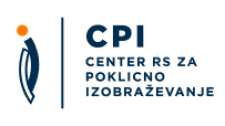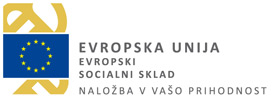Primary tabs
Magister dizajna/magistrica dizajna
Selected qualifications
| Name of qualification | Name of qualification: Magister dizajna/magistrica dizajnaAdd to comparison |
|---|---|
| Translated title (no legal status) | Translated title: Master of Arts in design |
| Type of qualification | Type of qualification: Master’s degree |
| Category of qualification | Category of qualification: Educational Qualification |
| Type of education | Type of education: Master's education |
| Duration |
Duration of education:
2 years
|
| Credits | Credits: 120 credits |
| Admission requirements |
Entry conditions:
The Master's study programme Design can be enrolled by graduates who have completed:
|
| ISCED field |
Field:
Arts and humanities
|
| ISCED subfield | subfield: inter-disciplinary programmes and qualifications involving arts and humanities |
| Qualification level |
SQF Level:
SQF 8 |
- understanding of knowledge in the field of design, materials, technologies and marketing,
- independence and creativity in scientific research and development work,
- independence team management and team participation in projects,
- developing a sense of social, cultural and political phenomena,
- understanding the concept of sustainable development, sustainable living, ecological efficiency, life cycle and its integration into thinking, living and design,
- knowledge and application of research methods and techniques and analyzes and socio-spatial trends,
- knowledge and understanding of conceptual thinking and design,
- knowledge and understanding of divergent and convergent thought processes,
- communication in professional Slovene and the first foreign language,
- developing intellectual property protection competences,
- knowledge and understanding of the process of developing new brands,
- use of information and communication technology in education and in everyday life situations,
- conducting experimental, historical and descriptive research,
- participation in market research and monitoring of modern world trends,
- professional management of design projects from the conceptual design to the actual implementation of the project,
- developing patent design skills and standards in object design,
- developing basic principles, methods and procedures of 'management design',
- knowledge and understanding of the theoretical foundations of analytical and consulting work (transfer of knowledge to the user),
DIRECTION OF INTERIOR EQUIPMENT
- use of lighting effects in the design of space, knowledge of lighting spatial, design, atmospheric and psychological qualities,
- developing the ability of spatial, subject and ambient design,
- developing design solutions taking into account ergonomic principles,
- understanding of basic concepts in the field of mass culture, cultural and media industry and knowledge of key theoretical contributions in this field,
- integrating the concept of sustainability and a sustainable approach to space design,
- knowledge and understanding of the connection, interdependence and diversity of architecture and fashion,
DIRECTION OF TEXTILES AND CLOTHING
- getting to know the organization and importance of system perception and following fashion trends in the fashion industry,
- connecting various creative processes with practical processes necessary for the realization of textiles,
- designing color combinations and patterns in fabrics and knitwear,
- computer design of the design and its preparation for the final implementation,
- understanding the operation and use and the importance of intelligent textiles and clothing for the development of advanced clothing and other textile products,
- mastering the knowledge of process parameters of textile production,
- knowledge and understanding of the requirements of various art media and technologies arising from them,
- mastering independent professional work from idea to realization and promotion,
- developing basic principles, methods and procedures of 'management design',
- knowledge and understanding of the theoretical foundations of analytical and consulting work (transfer of knowledge to the user),
DIRECTION OF VISUAL COMMUNICATION
- developing a planning methodology for solving more complex communication problems in the field of corporate identity design,
- knowledge and understanding of more complex means of communication,
- knowledge of methodological processes of illustration in visual,
- knowledge of aesthetic, psychological and message or functional effects of an individual project in the field of illustration and visual communications in the social environment,
- individual artistic expression,
- getting to know the basic laws and peculiarities of comics and animation,
- understanding the visual language and composition of a moving image using typography,
- acquiring complex knowledge in the field of publishing in visual communications,
- developing creative packaging design skills and the process of understanding 3D design.
Examination performance is graded as follows: 10 (excellent); 9 (very good: above-average knowledge but with some mistakes); 8 (very good: solid results); 7 (good); 6 (adequate: knowledge satisfies minimum criteria); 5–1 (inadequate). In order to pass an examination, a candidate must achieve a grade between adequate (6) and excellent (10).
A student may progress to a higher year if he / she has completed all the obligations determined by the study programme for progression to a higher year by the end of the academic year.
Third-cycle doctoral study programmes (SQF level 10)
Students complete their studies after completing all the obligations prescribed by the study programme.
Upcoming event
International Conference: 10 years of Slovenian Qualifications Framework
International Conference: 10 years of Slovenian Qualifications Framework Brdo Congress Centre, Predoslje 39, 4000...
© Center RS za poklicno izobraževanje, 2018. All rights reserved
Sitemap General legal notice Cookie Policy Production: ENKI






